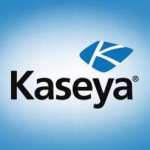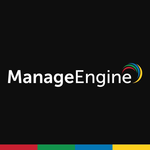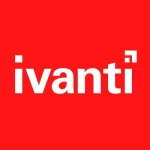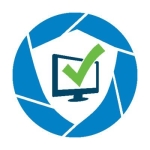
Senior Information Security Analyst at a tech vendor with 1,001-5,000 employees
Has enabled me to patch Windows workstations from detection to remediation in one place
Pros and Cons
- "Qualys Patch Management gives me a single source of truth for assets and vulnerabilities that need to be assessed, prioritized, and remediated."
- "I find the stability of Qualys Patch Management to be inconsistent; sometimes it works fine, while other times when I try to show a colleague something quickly, it takes considerable time to respond."
What is our primary use case?
My use cases for Qualys Patch Management are primarily for Windows workstations.
What is most valuable?
My favorite feature of Qualys Patch Management is being able to go from detection to patching in a single platform.
Qualys Patch Management helps me remediate vulnerabilities without needing to involve the security team because I am the security team. It helps me get context of what's going on.
What needs improvement?
One downside is that I've always wanted a dark mode in Qualys Patch Management. Because Qualys is so bright, if you're working in there for a while, you feel blind after extended time. Having a dark mode would be fantastic.
For how long have I used the solution?
I have been using Qualys Patch Management since the end of 2023.
Buyer's Guide
Qualys Patch Management
October 2025
Learn what your peers think about Qualys Patch Management. Get advice and tips from experienced pros sharing their opinions. Updated: October 2025.
872,922 professionals have used our research since 2012.
What do I think about the stability of the solution?
I find the stability of Qualys Patch Management to be inconsistent; sometimes it works fine, while other times when I try to show a colleague something quickly, it takes considerable time to respond.
What do I think about the scalability of the solution?
The scalability of Qualys Patch Management seems good.
How are customer service and support?
I contact their technical support or customer support frequently.
The quality and speed of their support could be better.
I would rate their support a five out of ten.
How would you rate customer service and support?
Neutral
How was the initial setup?
The initial deployment of Qualys Patch Management is difficult.
I wasn't involved with the company during the initial deployment, which occurred approximately ten years ago. However, newer modules and connector configurations always seem more difficult than they should be.
What was our ROI?
Regarding pricing for Qualys Patch Management, if you can get a good deal, the value is there. It's on the pricier side, but it provides value if you can utilize it effectively.
Which other solutions did I evaluate?
I have used alternatives such as Tenable.
I prefer Qualys over Tenable.
The biggest difference between Qualys and Tenable is reporting, as the quality of reports from Qualys is much better received than those from Tenable.
What other advice do I have?
I use Qualys Patch Management with VMDR.
This integration with VMDR is important for me.
Qualys Patch Management gives me a single source of truth for assets and vulnerabilities that need to be assessed, prioritized, and remediated.
I use the Risk Reduction Recommendation report in Qualys Patch Management.
The Risk Reduction Recommendation report is helpful.
Qualys Patch Management helps me streamline remediation and gives me a good starting point.
If the risk-based approach to automation is set up correctly, it performs excellently.
For newer deployments of Qualys Patch Management, typically one person handles the implementation.
I maintain Qualys Patch Management consistently, so it requires minimal effort on my end.
My advice for new users of Qualys Patch Management is to spend time at the training center. A streamlined initial video guide would be beneficial.
I rate Qualys Patch Management an eight out of ten overall.
Disclosure: PeerSpot contacted the reviewer to collect the review and to validate authenticity. The reviewer was referred by the vendor, but the review is not subject to editing or approval by the vendor.
Last updated: Oct 23, 2025
Flag as inappropriateSr Info security analyst at Televox Software
Significantly improves patch coverage and provides the ability to schedule jobs
Pros and Cons
- "Qualys Patch Management has helped reduce our organization's risk by 20%, and we have seen an improvement in our patch rates."
- "For those patches that I have to download for Patch Management, I would prefer if I could upload them to a repository instead of having to download them every time."
What is our primary use case?
Our use case for Qualys Patch Management is patching and updating. We use it for adding and removing local admin to the machines, along with various other tasks.
How has it helped my organization?
Qualys Patch Management helps the IT and security teams work together by enabling the IT team to handle Patch Tuesday and Microsoft patches. With Patch Management, I can monitor when patches have not been applied and help ensure 100% coverage on Patch Tuesday for the desktop team.
Qualys Patch Management has helped reduce our organization's risk by 20%, and we have seen an improvement in our patch rates.
What is most valuable?
The best feature of Qualys Patch Management is the ability to schedule jobs. I have browser updates that run automatically every day to update the three browsers, and I don't have to worry about it.
What needs improvement?
For those patches that I have to download for Patch Management, I would prefer if I could upload them to a repository instead of having to download them every time.
For how long have I used the solution?
I have been using the solution for about eight months.
What do I think about the stability of the solution?
I haven't experienced any bugs, glitches, or downtime, so I would rate Qualys Patch Management a ten out of ten for stability.
What do I think about the scalability of the solution?
For scalability, I would rate it a ten out of ten. We have approximately 8 to 10 users using this solution.
How are customer service and support?
I would rate the vendor support a ten out of ten.
How would you rate customer service and support?
Positive
Which solution did I use previously and why did I switch?
We had another patch management solution, but we were using Qualys for VMDR and moved everything into Qualys Patch Management for the simplicity of the user interface and because we had an existing relationship with Qualys. That way we can not only manage our vulnerabilities, but if the vulnerability requires a patch, it's very easy to fix it in Qualys. We were using BigFix for patch management.
How was the initial setup?
The deployment was easy.
The agents self-update, and by using Qualys Cloud, that's all handled by the vendor, so the maintenance aspect requires little to no interaction from our end.
What was our ROI?
It has improved our patch rate by 40%.
What's my experience with pricing, setup cost, and licensing?
Regarding the single source of truth, it really at this juncture has not reduced costs as of yet.
What other advice do I have?
I would recommend this product to other users because it's very user-friendly. I can't speak to the pricing aspect, but from a user standpoint, it's a very good product.
I would rate it a nine out of ten.
Which deployment model are you using for this solution?
Public Cloud
If public cloud, private cloud, or hybrid cloud, which cloud provider do you use?
Other
Disclosure: PeerSpot contacted the reviewer to collect the review and to validate authenticity. The reviewer was referred by the vendor, but the review is not subject to editing or approval by the vendor.
Last updated: Oct 18, 2025
Flag as inappropriateBuyer's Guide
Qualys Patch Management
October 2025
Learn what your peers think about Qualys Patch Management. Get advice and tips from experienced pros sharing their opinions. Updated: October 2025.
872,922 professionals have used our research since 2012.
Security Consultant at Onity
Streamlines patch management and customer support excels with timely responses
Pros and Cons
- "The consolidated report we received from the solution was very time-saving because, in the dashboard, we could get all the patch details for a particular patch and all the assets listed."
- "My overall rating for Qualys Patch Management is a ten out of ten."
- "False positives were the biggest concern."
- "False positives were the biggest concern. We also had some concerns with respect to the Cloud Agent."
What is our primary use case?
In the previous company, the customer was using Qualys Patch Management tool, and they were using more than one lakh assets in that organization. The Qualys Patch Management tool helped significantly in that case.
How has it helped my organization?
The risk-based approach Qualys Patch Management uses is very good for easily getting the details. That is one of the factors in the prioritization of the vulnerability. We can see if a patch is or is not available. The details are easily obtained through risk analysis. If everything is available, we still need to know which one to prioritize, and this approach helps us significantly with priorities.
We saw an improvement in our patch rates from using Qualys Patch Management, especially with respect to automated patches.
We got the consolidated data, and using automated Patch Management for a few assets saved a lot of time because we don't have to do it manually or raise tickets for everything.
By trusting Qualys Patch Management, we remediated many vulnerabilities, especially with Windows.
What is most valuable?
The consolidated report we received from the solution was very time-saving because, in the dashboard, we could get all the patch details for a particular patch and all the assets listed. That was very easy. Instead of going through Excel sheets, we could easily pull up the data and produce it based on the operating system, distribution, and other things.
What needs improvement?
False positives were the biggest concern.
We also had some concerns with respect to the Cloud Agent. VMDR is something that whoever uses Qualys Patch Management will always use. We used both, but sometimes we got different details in Patch Management and VMDR. The data differs, especially with Cloud Agent-installed assets. We have had to contact their technical support many times, especially for Cloud Agent troubleshooting. We raised many feature requests with Qualys for Cloud Agent and faced many issues with it. Cloud Agent always gave us trouble, not just with Qualys, but with other tools too. However, compared with others, Qualys did have more issues with Cloud Agent.
For how long have I used the solution?
I used Qualys Patch Management for one year.
What do I think about the stability of the solution?
The platform maintenance is according to what we have seen. A few times Qualys was not reachable for very few minutes, but stability-wise, it is a very good product.
What do I think about the scalability of the solution?
Scalability-wise, Qualys Patch Management is a very good product. I never faced any issues with any of that.
How are customer service and support?
I would rate them a ten out of ten for support because they are very approachable. Whenever we raise a request and mention the priority of the ticket, they respond immediately via email or call.
How would you rate customer service and support?
Positive
Which solution did I use previously and why did I switch?
We were using another tool before Qualys Patch Management, though I don't remember which one. When we did the PoC, compared to Qualys, the other tool was giving less data, and that is why we moved to Qualys Patch Management.
What other advice do I have?
My overall rating for Qualys Patch Management is a ten out of ten.
Disclosure: My company has a business relationship with this vendor other than being a customer. Partner
Last updated: Apr 8, 2025
Flag as inappropriateSenior Security Consultant at CyberNxt Solutions LLP
Allows us to prioritize and remediate threats without involving our security team
Pros and Cons
- "Patch management provides more clarity from the dashboard and console, which is very helpful for our team to prioritize and take prior action."
- "The customer support team is quite responsive and always ready to assist."
- "Downloading extensive vulnerability reports, especially those with millions of entries, is time-consuming."
- "Downloading extensive vulnerability reports, especially those with millions of entries, is time-consuming. To improve efficiency, Qualys should implement faster download speeds and offer reports in Excel format in addition to the current CSV option."
What is our primary use case?
I initially used Qualys' Vulnerability Management module and later incorporated their Patch Management module for remediation. This allowed us to deploy patches, schedule deployments for various machines, and automate the process on a weekly or monthly basis. Critical assets receive daily deployments with real-time detection and prioritization for enhanced security.
How has it helped my organization?
We can prioritize vulnerabilities using Qualys' risk-based approach. The platform offers a prioritization tab that allows us to tailor the process to the company's requirements. Whether the focus is on risk, asset criticality, or exploitability, we can leverage the prioritization tag in Qualys to manage and address vulnerabilities effectively.
It's important that Qualys Patch Management and VMDR integration encompasses all necessary patches and configuration changes to address vulnerabilities identified by VMDR. This integration ensures real-time detection and remediation of vulnerabilities.
The TruRisk Insights allows us to prioritize and remediate threats without involving our security team.
Qualys Patch Management provides a single source of information to access asset and vulnerability data. Granting the IT team access to the Patch Management module lets them retrieve information through alerts. Through this module, the team receives email alerts about patch failures, enabling them to redeploy patches and investigate the cause of failure, such as machines rebooting at the scheduled time.
Qualys Patch Management helps prioritize vulnerabilities based on risk and asset criticality, facilitating the patching process.
The integration with ServiceNow helps close tickets faster by automating tasks and alerting the IT team when a patch has failed.
What is most valuable?
Patch management provides more clarity from the dashboard and console, which is very helpful for our team to prioritize and take prior action.
What needs improvement?
Downloading extensive vulnerability reports, especially those with millions of entries, is time-consuming. To improve efficiency, Qualys should implement faster download speeds and offer reports in Excel format in addition to the current CSV option.
For how long have I used the solution?
I have been using Qualys Patch Management for more than two years.
How are customer service and support?
The customer support team is quite responsive and always ready to assist. When I submit a request, they promptly contact me and, if necessary, schedule a call to efficiently address my questions, even during my early days with the product.
How would you rate customer service and support?
Positive
Which solution did I use previously and why did I switch?
Previously, we used BigFix and SSCM modules for patch application but have since transitioned to Qualys Patch Management for a more streamlined approach. Qualys Patch Management provides a single console for patch management and VMDR, simplifying operations and automating reporting.
Which other solutions did I evaluate?
What other advice do I have?
I would rate Qualys Patch Management nine out of ten because there is room for improvement in tool features to enhance competitive market standings.
Disclosure: PeerSpot contacted the reviewer to collect the review and to validate authenticity. The reviewer was referred by the vendor, but the review is not subject to editing or approval by the vendor.
Employee-Owner, Senior Consultant, Information Security at Keller Schroeder
Helps simplify patching, integrates well, and reduces costs
Pros and Cons
- "The most valuable feature in Patch Management is the Qualys query language for set-it-and-forget-it patching for our preapproved patches, and our preapproved schedules, That is extremely helpful compared to the old days of patching."
- "A common area for improvement in Patch Management, both within our environment and others I've encountered, is the lack of built-in driver updates."
What is our primary use case?
My organization uses Qualys Patch Management internally, including its core patching functionality and Vulnerability Management, Detection, and Response. As a consultant, I help several Qualys user clients with best practices and similar tasks, addressing use cases ranging from vulnerability reduction and patch management to asset management.
Qualys is a cloud-based platform. While they offer a private cloud option at a higher cost, their core functionality resides in the cloud. The lightweight agents we install on our systems simply collect data and upload it to the cloud-based Qualys interface. The only exceptions are passive sensors like network sniffers and on-premise scanners, which are optional deployments for specific needs. This cloud-centric approach eliminates the need for us to manage on-premise servers, unlike some competing products like baramundi.
How has it helped my organization?
Qualys query language simplifies patch selection by allowing us to define risk-based criteria. We can target patches based on severity medium to critical and Qualys rating while excluding specific unwanted patches like "Patch xyz". As long as a patch meets our pre-approved criteria, it's automatically selected, making the approval process quick and efficient.
The Patch Management integration with VMDR including all development patches and configuration changes required to remediate vulnerabilities detected by the VMDR is significantly important.
While Qualys offered benefits initially, the deployment of the cloud agent truly transformed our security posture. Previously, regular scans provided only point-in-time vulnerability identification. Now, with continuous updates from the cloud agent every four hours, we have near real-time visibility into our risk levels, allowing us to prioritize and swiftly address vulnerabilities to minimize overall security exposure.
TruRisk automation streamlines vulnerability remediation by prioritizing threats based on real-world exploitability, not just a generic CVSS score. This allows us to focus on the most critical issues first, avoiding the time-wasting whack-a-mole approach of patching everything at once. While all vulnerabilities eventually need to be addressed, TruRisk helps us prioritize effectively and work through them in a methodical way.
Qualys' prioritization feature streamlines vulnerability management by offering a central hub to find, rank, and address critical security issues. This unified approach significantly improves collaboration between security and IT teams. Previously, prioritizing vulnerabilities was often a matter of simply patching critical ones. Patching policies also play a role, with most companies aiming for a 30-day window or less for critical patches. While the industry average turnaround is 17 days, faster patching remains crucial. Qualys' TruRisk scoring system helps identify outliers – vulnerabilities that might slip through the cracks in a well-managed environment. Traditional patching methods, like Microsoft's WSUS, may miss these outliers, but Qualys excels at finding them, providing better communication and faster remediation.
This single source has helped reduce soft costs where employees were wasting time spinning their wheels searching for answers. This newfound focus allows them to dedicate their energy to more important tasks.
Prior to implementing patch management, a random sampling of systems would often reveal outdated patches, some exceeding 60 days old. However, with patch management in place, finding such aged patches is now a rarity.
We integrated Patch Management on top of Qualys VMDR. This gave us a lot more visibility and accuracy.
Patch Management has helped to reduce our organizational risk.
What is most valuable?
The most valuable feature in Patch Management is the Qualys query language for set-it-and-forget-it patching for our preapproved patches, and our preapproved schedules, That is extremely helpful compared to the old days of patching.
What needs improvement?
A common area for improvement in Patch Management, both within our environment and others I've encountered, is the lack of built-in driver updates. Ideally, the system would handle updates for network interface cards, video cards, and other components, eliminating the need to rely on manufacturer-specific tools like Dell Update or HP Update. Integrating these patching options would significantly improve the overall functionality.
Qualys Patch Management primarily updates operating systems, third-party software including Adobe products and many more, leaving video card drivers and firmware updates to other tools. This focus on core software is understandable, as driver and firmware updates can be more complex.
The price has room for improvement.
For how long have I used the solution?
I have been using Qualys solutions for over 20 years.
What do I think about the stability of the solution?
Qualys Patch Management is very stable. They clearly communicate any scheduled maintenance in advance, and these updates typically require no downtime. In rare cases of major maintenance, they might announce limited portal access during specific hours. Like any software, occasional minor glitches can occur, but we can easily check for known issues at status.qualys.com before troubleshooting on our own. Overall, Qualys Patch Management is a reliable solution.
What do I think about the scalability of the solution?
Qualys Patch Management is highly scalable.
How are customer service and support?
Qualys technical support has been excellent recently. While there have been occasional periods of lower satisfaction in the past, similar to any organization, they seem to be prioritizing customer happiness. This is evident by their recent staffing improvements, which have led to my last few support requests being resolved quickly and efficiently.
With extensive system use, I've occasionally received initial responses from what seems like level-one support. I then need to clarify and request further troubleshooting before they escalate the issue.
How would you rate customer service and support?
Positive
How was the initial setup?
Qualys Patch Management deployment is straightforward as long as we have the right team, whether it's a consulting firm or our own IT staff familiar with whitelisting. This is because whitelisting the Qualys Cloud Agent on systems protected by endpoint security tools like Carbon Black or CrowdStrike is crucial to prevent them from blocking the agent. Fortunately, the whitelisting requirements are well-documented, making implementation smooth for a prepared team.
A single person can handle the deployment if they have permission to distribute the cloud agent, install on-premise scanners, and build the virtual machine for the scanner. In fact, several of my colleagues successfully manage deployments for large organizations on their own.
What's my experience with pricing, setup cost, and licensing?
Qualys Patch Management's pricing is competitive. While some perceive it as expensive, competitor tools are similar. While a free option like Microsoft WSUS exists, it lacks features. While I'd prefer Qualys VMDR to include Cyber Security Asset Management for a more attractive overall package, Patch Management itself remains competitively priced. Scaling brings lower per-asset costs, and Qualys recently introduced better pricing bundles for smaller environments.
Which other solutions did I evaluate?
To verify Qualys Patch Management's effectiveness, I've occasionally used free tools like Patch My PC to scan for missed patches. These scans consistently come up clean, giving me confidence that Qualys Patch Management is doing a good job.
While both Qualys Patch Management and baramundi Update Management are powerful tools, Qualys offers a clear advantage in ease of use. For organizations with large IT teams that can handle a more hands-on approach, baramundi can be effective, but it requires more ongoing management compared to Qualys' set-and-forget approach. Notably, baramundi goes beyond patching with software distribution capabilities, but this additional functionality comes at the cost of increased complexity. Ultimately, for those seeking a simpler solution, Qualys is the better choice.
What other advice do I have?
I would rate Qualys Patch Management ten out of ten.
While the initial setup involves deploying cloud agents, Qualys Patch Management is low maintenance. Updates for both agents, signatures, and related components are automatic. Qualys handles maintenance in the cloud, and new systems are easily enrolled with agents through software distribution or policy enforcement.
New Qualys Patch Management users should consult the documentation and training resources before deploying. While a trusted partner can assist with implementation, understanding the process is crucial. Qualys offers free training to cover essential steps like agent deployment, configuration, and security considerations to ensure successful patching. Don't skip these steps, as seemingly minor setup issues can hinder functionality. This applies not just to Qualys, but to any endpoint security solution.
Which deployment model are you using for this solution?
Public Cloud
Disclosure: PeerSpot contacted the reviewer to collect the review and to validate authenticity. The reviewer was referred by the vendor, but the review is not subject to editing or approval by the vendor. The reviewer's company has a business relationship with this vendor other than being a customer: Reseller
Senior System Associate at NTT Data
Automating patch compliance with collaboration despite some interface challenges
Pros and Cons
- "Qualys allows us to automate and fix patches through the tool, achieving a compliance rate of over 95%."
- "Compared to other tools, Qualys is better due to its automation capabilities, which allow us to achieve high compliance rates."
- "In our environment, the application sometimes crashes, requiring improvement."
- "In our environment, the application sometimes crashes, requiring improvement."
What is our primary use case?
We use Qualys Patch Management to fix patch vulnerabilities in our environment. We're dealing with machines that have pending updates, and we need to configure our console.
What is most valuable?
In Qualys, we configure Tanium, and Qualys acts as a collaborator with Tanium in our environment. We address machine details, compare with SSCM tools, and manage assets and hardware. Qualys allows us to automate and fix patches through the tool, achieving a compliance rate of over 95%.
What needs improvement?
In our environment, the application sometimes crashes, requiring improvement. Additionally, the user interface could be made easier to use, especially for system administrators.
For how long have I used the solution?
I have been using Qualys for about one year.
How are customer service and support?
We have sometimes escalated questions due to application crashes, which need improvement.
How would you rate customer service and support?
Which solution did I use previously and why did I switch?
We previously worked with Microsoft Endpoint Configuration Manager (SSCM) for about two and a half years, yet faced issues with achieving target compliance.
How was the initial setup?
I was not involved in the initial setup of the Qualys solution.
What was our ROI?
I am not able to give a proper answer regarding the return on investment.
What's my experience with pricing, setup cost, and licensing?
I am not familiar with the pricing or setup cost of the Qualys solution.
What other advice do I have?
Compared to other tools, Qualys is better due to its automation capabilities, which allow us to achieve high compliance rates.
I rate Qualys Patch Management a ten out of ten.
Which deployment model are you using for this solution?
Public Cloud
Disclosure: PeerSpot contacted the reviewer to collect the review and to validate authenticity. The reviewer was referred by the vendor, but the review is not subject to editing or approval by the vendor.
Works at a comms service provider with 1-10 employees
Enables seamless deployment of patches while ensuring effective vulnerability management
Pros and Cons
- "The first thing I would say is the ease of use."
- "There is room for improvement in the inclusion of more patches. Not all patches are available on Qualys, so they need to get licenses for other patches as well."
What is our primary use case?
Mostly, I've used it because I'm working in the Vulnerability Management Team. I've done the POC for Patch Management and then handed over the product to the Patch Management Team, which handles the patching. I tested the module by Qualys, exploring the functionality of the Patch Management module, such as available patches. All these tasks were completed by me before procuring the product, and then access was provided to another team that uses it for patching. As part of the Vulnerability Management Team, my work involves overseeing the entire Qualys product, including VMDR, FedRAMP, cloud agents, and other functionalities.
What is most valuable?
The first thing I would say is the ease of use. It's so user-friendly that even a newcomer in IT can use it directly. It helps reduce our attack surface by patching all software vulnerabilities and deploying patches directly from the console. The connection and integration between different tools are excellent, allowing continuous monitoring of the types of patches released, which can be quickly deployed onto the systems. The dashboards help identify what type of patch I want to deploy and which patches are missing.
What needs improvement?
There is room for improvement in the inclusion of more patches. That's the only improvement I would suggest. Not all patches are available on Qualys, so they need to get licenses for other patches as well. That would be more helpful.
For how long have I used the solution?
I have used the solution for 3 years.
What do I think about the stability of the solution?
It's quite stable. I would say it’s a nine.
What do I think about the scalability of the solution?
Scalability, it's dependable.
How are customer service and support?
Technical support, I would say it’s about seven and a half.
Which solution did I use previously and why did I switch?
We used BigFix before.
How was the initial setup?
For Patch Management, the testing part took about one to two weeks. Procurement took one week because it was pending with the procurement team. Overall, I guess it took about a month.
What was our ROI?
We have saved time and resources by detecting vulnerabilities, which helps us patch many assets. I can't quantify it exactly, but it's significant as it prevents vulnerabilities from being exploited. If those vulnerabilities were open and we did not have Qualys or similar solutions, we would have been at risk of attacks. I cannot give a specific number, but having a Vulnerability Management tool has a significant impact.
Which other solutions did I evaluate?
These two tools are completely different. BigFix is a full-fledged patching tool where you can directly apply patches but cannot view vulnerability data. On Qualys, you can see vulnerabilities and deploy patches directly. It offers a different perspective by allowing you to view a vulnerability and deploy a remedying patch. Qualys acts like both a vulnerability management tool and a patching tool, which is quite beneficial. Tools like Nessus, Rapid7 handle vulnerability management, while BigFix, SCCM handle patching.
What other advice do I have?
I would recommend it because of its ease of use and integration as both a Vulnerability Management and Patch Management tool. I rate it nine out of ten.
Which deployment model are you using for this solution?
Hybrid Cloud
Disclosure: PeerSpot contacted the reviewer to collect the review and to validate authenticity. The reviewer was referred by the vendor, but the review is not subject to editing or approval by the vendor. The reviewer's company has a business relationship with this vendor other than being a customer: Partner
Last updated: Mar 2, 2025
Flag as inappropriateCybersecurity Engineer at a manufacturing company with 51-200 employees
Vulnerability prioritization and dashboards help with efficient patch management
Pros and Cons
- "Patch Management, if configured correctly, works effectively without requiring further action."
- "Qualys can do regular check-ins to go over not only all the vulnerabilities but also the overall process to see if there is anything where we might need improvement."
What is our primary use case?
We use almost every module that Qualys has, except the EDR, which is endpoint protection. They came up with that module last year. We use their patch management, vulnerability scanners, cloud agents, and network passive scanners. We are using everything that is available.
How has it helped my organization?
They have a very good approach called TruRisk. If an exploit is publicly available or something is public-facing, they have an in-depth categorization process, so I do not have to think about what to patch first. Qualys take care of that. They assess them based on many factors. They have a team that works on that and goes through every aspect of the vulnerability in terms of how easily it can be exploited, and then they put a priority on it.
TruRisk automation has not helped us remediate vulnerabilities without needing to involve our security team. That is because we have been having some issues with the Windows Store app. We blocked it now but did not block it before, so it got installed on some of the machines. Because of that, we have to deal with it manually because Patch Management cannot do that. They will look for attributes, and they still exist. We cannot delete or update them because the Windows Store app is blocked, so we have to deal with those things manually.
They have a dashboard, which is very useful. I heavily rely on the dashboard. I create additional widgets if I have to, but the dashboards they have in their library are sufficient and very easy to use. I already know their language and I can build queries if necessary.
Having this single source of truth affects the way our security and IT teams work together. Instead of me telling or sending screenshots, I can send them a link. When I send the link, others can see the exact same screen and easily drill down on endpoints.
This single source of truth helps reduce costs. It saves time, and time is always equal to money.
Patch Management has improved our patch rates. Previously, our approximate patching duration to close a vulnerability or remediate a vulnerability was almost 30 to 40 days. Right now, it does not exceed 11 days. Qualys has its own priority levels. They have priority 4, priority 3, priority 2, and priority 1 levels. Priority 4 ones are the most dangerous ones. They are patched right away. For other priorities, it was 30 to 40 days and then it was 21 days. The last one was about 14 days and now it is 11. It is a very good progress from what it was before.
I do not use their Risk Reduction Recommendation Report, but I usually go for the dashboard. The dashboard usually tells everything such as the end-of-life hardware, software, or other things. When I drill down, I can generate a report and present it to my IT colleagues and tell them that we need to get rid of this equipment or this software. We need to do something with it. This is an on-demand report, so I can put it on my schedule, and when I need it, I can generate it.
Patch Management has definitely helped to reduce our organization's risk. It is hard to provide metrics because, with the security field, you cannot be very precise about how secure you are. However, I can sleep at night and not stress about if some computer is being patched. I do not worry about situations where when you have a lot of systems, some of them you cannot patch because they have old applications. If you patch them, it will break something. I do not have that stress because I can rely on Qualys to do its job. In my previous job, I have had systems that I could not patch. I had to request a window to do the patchwork. With Qualys, I do not have to do that. There is a work/life balance. I got back my Saturdays and Sundays. In my previous job, I came to the job on Saturday and Sunday when people were not there and patched the systems. With Qualys, it is definitely not the case. We do not have to do that.
What is most valuable?
Patch Management, if configured correctly, works effectively without requiring further action. There are some applications that Patch Management cannot update, but they have a Custom Assessment and Remediation module to update third-party software. That module completes patch management, and you can now update everything.
The vulnerability scanner is solid and thorough. Vulnerability scans go through everything such as the endpoints, servers, and hardware.
What needs improvement?
They are constantly working on making it better. There is no 100% reliable or working application or software. There are caveats with the network passive sensor when it does not merge or something does not feel right, but whenever I have to report on those things, someone from their support team jumps on and tries to help us, which is why I like it. They should keep it up.
They can maybe do check-ins with the customers once a month. All the vendors are doing it nowadays. Qualys can do regular check-ins to go over not only all the vulnerabilities but also the overall process to see if there is anything where we might need improvement. They know about the latest trends, and they have meetings about them. They can relay to us some newer information that we do not know, but they saw in our environment. That would be a nice thing.
For how long have I used the solution?
I have probably been using it for three years, give or take.
How are customer service and support?
I have interacted with them many times. Their support is good and reactive. When we needed support, it took a day or two. We can always reach out to our technical account manager. He is able to get on board with the engineers to help resolve issues, which I appreciate. If we need to fix something urgently, he can always help us.
How would you rate customer service and support?
Positive
Which solution did I use previously and why did I switch?
We also use Microsoft through the GPL, and we have KACE, which checks for missing patches and applied patches, but mostly, we use Qualys. Qualys would be our single pane of glass where we see all those.
How was the initial setup?
I joined after the initial deployment was completed, but I deployed a couple of scanners, like vulnerability scanners on the VMs, and that process was easy. It was self-explanatory and straightforward. You just spin one up, put the IP address, and it works.
It does not require any maintenance. It is a cloud agent. As long as the cloud agent is installed on the endpoint, we are collecting all the information and the system is being patched. That is a good part.
What other advice do I have?
It took us some time to realize its benefits. I went to a Qualys conference, and that was when I started to realize its benefits. Till then, I thought Rapid7 was a good one or Manage Engine was a good one. I thought those products were good, and they also patch third parties whereas Qualys did not patch third parties. After going to Qualys, they explained there is a way to do that. It was a longer way, which I did not do. We decided to go with an MSP that specializes in installation and fine-tuning the Qualys product. When they did everything, I did not have to touch any configuration with Qualys Patch Management. Everything was going through. With the way we did things previously, it was going through, but it was a longer approach. It was taking a little longer and was more manual. We did not properly utilize tagging. We did not properly utilize the patching process scheduling. The MSP guys did tagging. They did automation of the patch management according to the risks. That was very important. Previously, we had six or seven jobs and sometimes, we manually patched individual machines. After the MSP guys did the fine-tuning, we had only two scheduled jobs, and that was it. The first job does 10 to 15 testing computers, and then the next one does the old machines.
I would rate Qualys Patch Management a nine out of ten.
Which deployment model are you using for this solution?
Public Cloud
If public cloud, private cloud, or hybrid cloud, which cloud provider do you use?
Other
Disclosure: PeerSpot contacted the reviewer to collect the review and to validate authenticity. The reviewer was referred by the vendor, but the review is not subject to editing or approval by the vendor.
Buyer's Guide
Download our free Qualys Patch Management Report and get advice and tips from experienced pros
sharing their opinions.
Updated: October 2025
Product Categories
Patch ManagementPopular Comparisons
Microsoft Configuration Manager
Kaseya VSA
ManageEngine Patch Manager Plus
Vicarius vRx
Microsoft Windows Server Update Services
Ivanti Security Controls
Patch My PC
PDQ Deploy
Buyer's Guide
Download our free Qualys Patch Management Report and get advice and tips from experienced pros
sharing their opinions.
Quick Links
Learn More: Questions:
- Why is patch management important for cybersecurity?
- When evaluating Patch Management, what aspect do you think is the most important to look for?
- What patch management solution do you recommend?
- What solution should we use for upgrading and patching OS to remediate vulnerabilities?
- Why is Patch Management important for companies?
- What are Pros and Cons of Cloud-based Patch Management?















